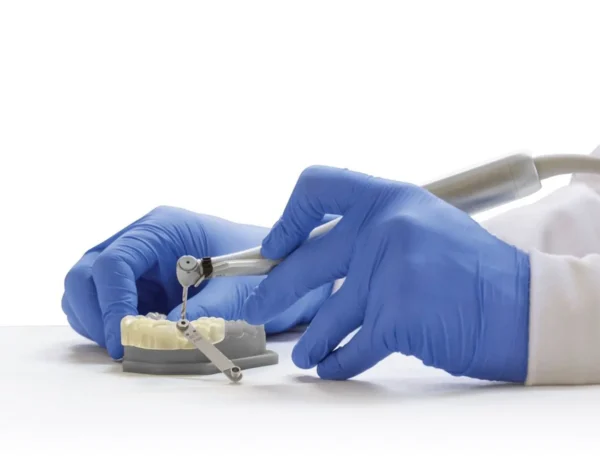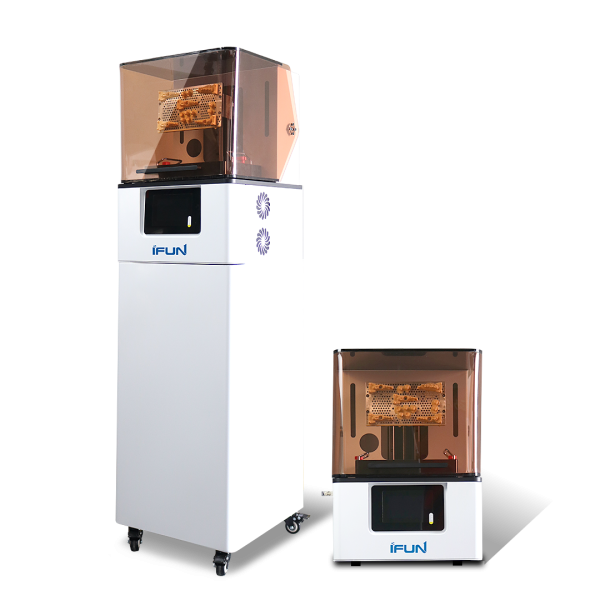What Is a Dental 3D Printer?
A dental 3D printer is a specialized type of 3D printer designed to produce accurate dental models, crowns, bridges, implants, and appliances directly from digital files. Using additive manufacturing techniques, these printers build objects layer by layer from dental resins, thermoplastics, or even metal powders. Compared to traditional manual or subtractive manufacturing processes, 3D printer dental systems significantly improve precision, customization, and production speed in the dental field.
Why 3D Printing Matters in Dentistry
With the rise of personalized care in modern dentistry, the demand for accurate, fast, and patient-specific solutions has never been higher. Traditional dental prosthetics are made using molds and manual labor, which can be time-consuming, inconsistent, and wasteful. In contrast, dental 3D printing allows for digital scanning, design, and direct fabrication of dental products tailored to each patient’s oral anatomy.
This technology enables dental professionals to:
- Manufacture 3D printed dental models for diagnostics and planning
- Create 3D printed dental crowns, bridges, and dentures
- Produce orthodontic appliances and clear aligners
- Design surgical guides for 3D printing dental implants

Core Advantages of 3D Printing in Dentistry
1. High Precision and Fit
Using technologies like DLP (Digital Light Processing) and SLA (Stereolithography), dental resin 3D printing can achieve micron-level accuracy. For instance, 3D printer for dental crowns produces crowns that fit more precisely than those made with traditional milling. This reduces the need for adjustments and improves patient comfort.
2. Personalization at Scale
Every patient’s oral structure is unique. 3D dental printer systems use intraoral scan data to generate digital models that perfectly reflect a patient’s mouth. Whether it’s creating implant abutments or orthodontic retainers, 3D printing dental crowns and appliances ensures unmatched customization and improved treatment outcomes.
3. Faster Turnaround
Compared to traditional manufacturing, which may take days or weeks, a best dental 3d printer can output a complete set of 3D printed dental crowns or surgical guides within hours. This is especially valuable for emergency cases or same-day restorations.
4. Lower Material and Labor Costs
3D printer dental crowns and models require significantly less material waste. The additive nature of the process means materials are deposited only where needed. In addition, once digital design is complete, printing requires minimal human supervision, reducing labor dependency and increasing productivity.

Common Technologies Behind Dental 3D Printing
DLP (Digital Light Processing)
DLP is one of the most widely used methods for 3d dental model printing. A digital projector cures resin layer by layer, offering high precision and fast processing speeds—ideal for crowns, bridges, and surgical guides.
SLA (Stereolithography Apparatus)
SLA works by curing resin point-by-point using a laser. While slightly slower than DLP, it’s known for producing smooth surfaces and excellent detail, making it ideal for complex 3D printed dental implants or precision-fit parts.
FDM (Fused Deposition Modeling)
FDM technology uses heated filaments to construct parts layer by layer. While not as precise as DLP or SLA, it’s suitable for quick production of basic 3d printed dental models or study models at a low cost.
Inkjet (Material Jetting)
This high-end technology can print in full color and multiple materials, useful for realistic models or complex dental crown 3D printer applications. It’s often used in dental labs for detailed visualization and patient communication.
Key Applications of Dental 3D Printers
1. Dental Restorations: Crowns, Bridges, and Dentures
3d printing dental crowns and temporary bridges using resin materials has become mainstream. These restorations can be printed and used chairside or in lab workflows, significantly shortening treatment time and reducing lab costs.
2. Orthodontic Models and Clear Aligners
Using a 3d printer dental solution, orthodontists can produce digital study models and custom aligners without traditional plaster molds. This digital workflow allows faster turnaround and better storage of patient data.
3. Surgical Guides for Implants
3d printer dental implants are often used to create precise surgical guides that assist in accurate implant placement. These guides reduce surgical time, improve safety, and enhance implant success rates.
4. Educational and Diagnostic Tools
3D printed dental models help dentists plan procedures, educate patients, and train dental students with lifelike replicas of oral structures, improving communication and treatment accuracy.
Final Thoughts
The integration of 3D printing in dental industry is reshaping the landscape of modern dentistry. From design to delivery, dental 3D printers empower clinics and labs to offer faster, more accurate, and more personalized care. As the technology evolves, we can expect broader adoption and even more innovative applications—making 3d dental printer systems indispensable tools in the future of oral healthcare.


